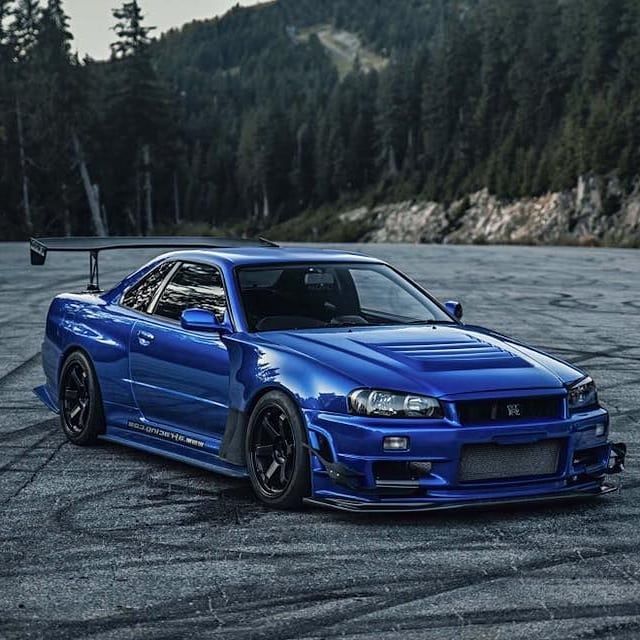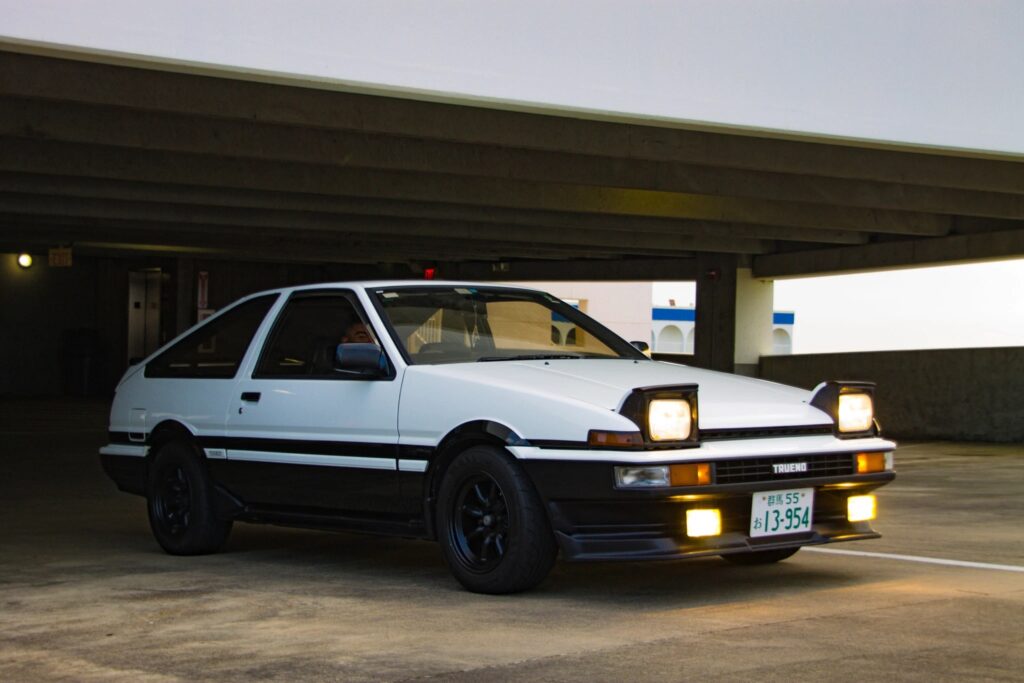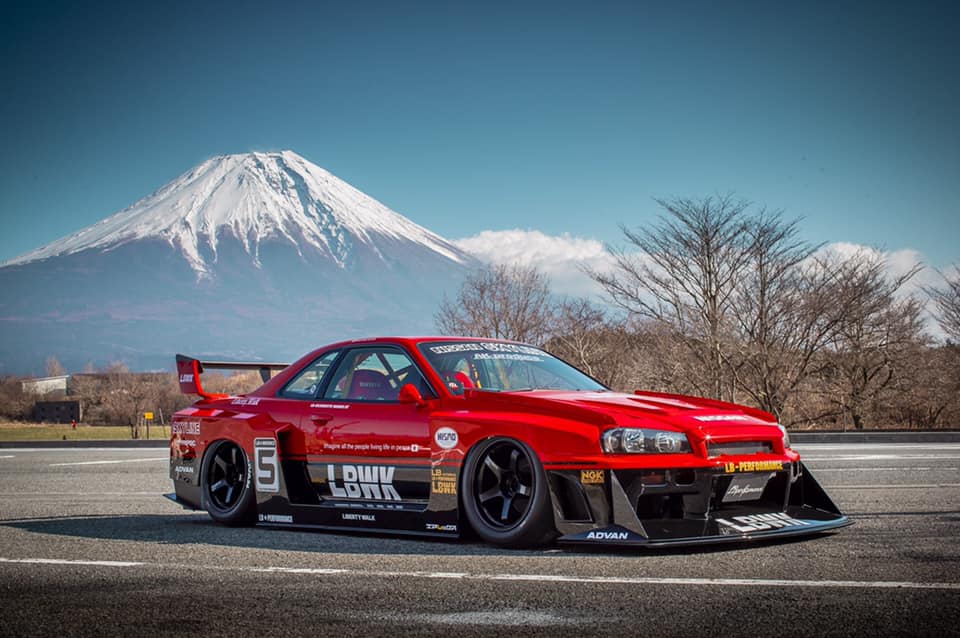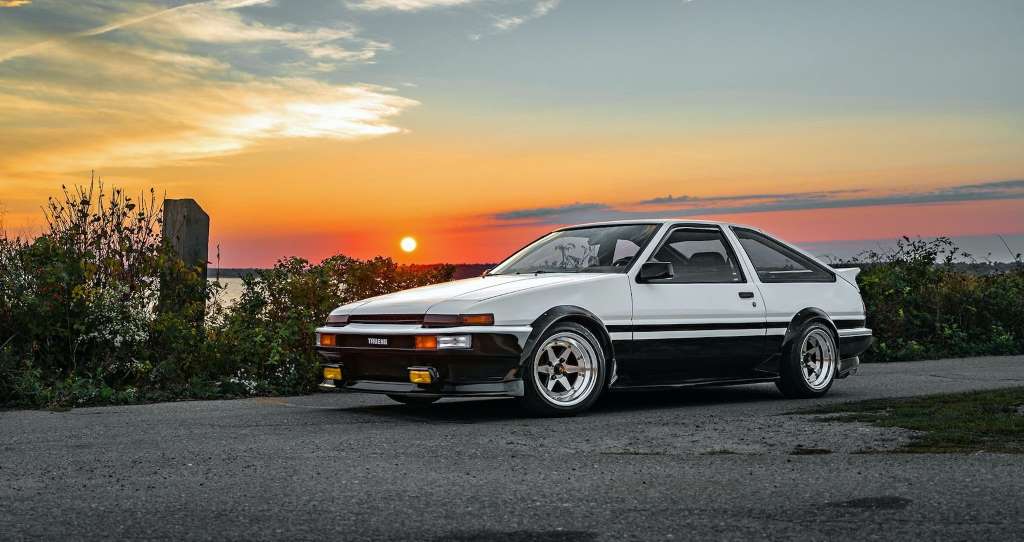Kei Cars – Everything You Need To Know
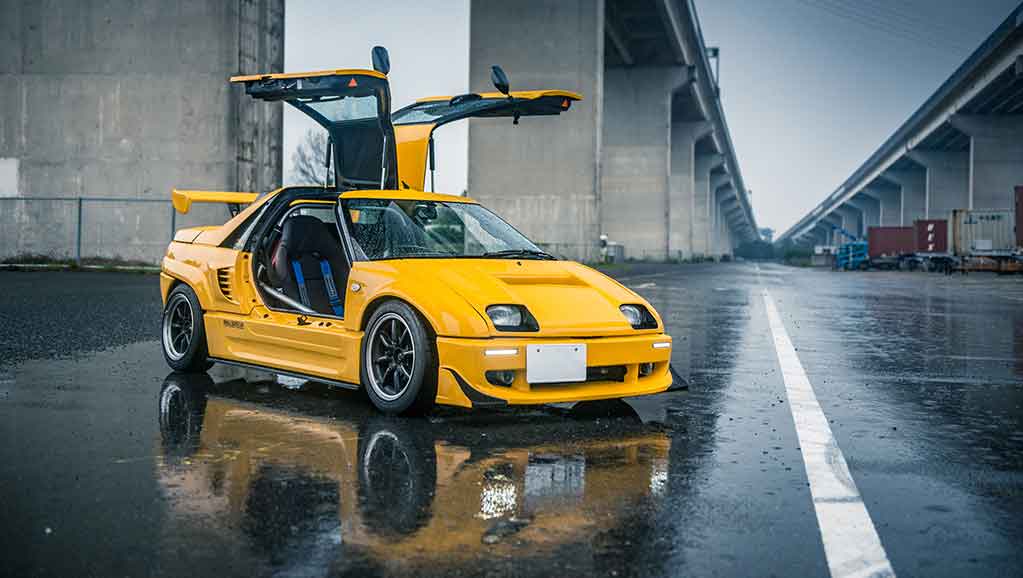
In Japan, people call Kei cars Keijidosha or “cars that are light”. These cars are built for a niche market that, as you might have guessed, is based in Japan. It’s pretty hard to find foreigners outside of Japan that know what Kei cars look like unless they are petrolheads themselves.
This type of car is actually highly popular in Japan. You might have heard of them as microcars, city cars, or ultra-mini. In Japan, this is known as the smallest highway-legal passenger car, equivalent to EU A-segment cars.
Kei is actually a category devised by the government in 1949 and has been revised a number of times. Standards that Kei cars must conform to are maximum vehicle sizes, engine capacity, and power output, and in some areas, you don’t even have to confirm that your car can be parked somewhere, since they are guaranteed to fit in any situation.
Kei Car History
These funny looking cars dated back a long time ago and stories about these cars will even give a gripping history lesson. Although Kei cars are relatively popular with Japanese customers in almost all age groups, it should be noted that the expansion of this niche market did not gain momentum in foreign markets due to the low profitability, which is again explained by its small size and specialized nature.
During the mid-50s, Europeans were won over by the idea of lightweight, affordable, family-friendly cars and the microcar boom took over. At the same time, the Japanese were just warming up to this type of car.
In Japan, these tiny kei cars were the way to get the war-torn economy back into motion, and evidently it worked like a charm. The growth of kei cars was thanks to the Ministry of International trade and Industry who looked to kickstart the economy after World War II. Japan emerged as one of the superpowers of the world based on many factors, and kei cars were one of them.
The kei cars soon took the market by storm. The kei class introduced the 150cc limit in 1949, but switched up to 360cc in 1955, and the stream of kei cars overtook the street in the 1960s as a cheap alternative to regular-sized cars. 1955 was hailed as the real birth of Kei cars, and Suzuki Suzulight was certified as the first kei car, while the Subaru 360 became famous around the world (a total of 300000 Subaru was made). Although business was flourishing, the interest in kei cars deteriorated due to the government abolishing benefits for kei car owners. Kei cars fought back and gained ground when the 550cc limit was introduced in 1976. The modern kei cars were born in the 1990s when they decided to add 110cc and 100mm longer body shells. That is how the legends like the Autozam AZ-1 and Suzuki Cappuccino were brought to life. Japanese kei cars came a long way to get to where they are now.
Top 10 Kei Cars On The Market
If the story above has piqued your interest in kei cars, then I guess it’s time we move on to talk about some of the best kei cars on the market.
After all, not all kei cars are the same, and there are just as many variations of them as there are other types of Japanese automobiles. For those who want a car that is as affordable as it is reliable, then why not skim through these suggestions.
1. Subaru 360 (1958-1971)
The Subaru 360 is a rear-engined, two-door kei car that was nicknamed “ladybug” and was Subaru’s first car product. This was the car that started Subaru’s history in America, it also ignited the love for kei cars in America.
Surely it was lacking in design, but what’s important was how it picked up Subaru’s sales during their infancy. Most would have found it peculiar for Subaru to last as long as it did in the States. It was just way too tiny for Americans! However, it was actually loved in Japan as well as America due to its unique features as one of the first kei cars in the world.
2. Suzuki Alto (1979-present)
The Suzuki Alto was originally intended as a derivative of the Suzuki Fronte, but the name “alto” gained enough popularity to replace the Fronte entirely. Currently, it continues to hold its spot in the Indian market as one of their best selling products, due to its status as a pocket-friendly car. Still, it is in no way a low-quality vehicle. The ninth generation was introduced in Japan in late 2021.
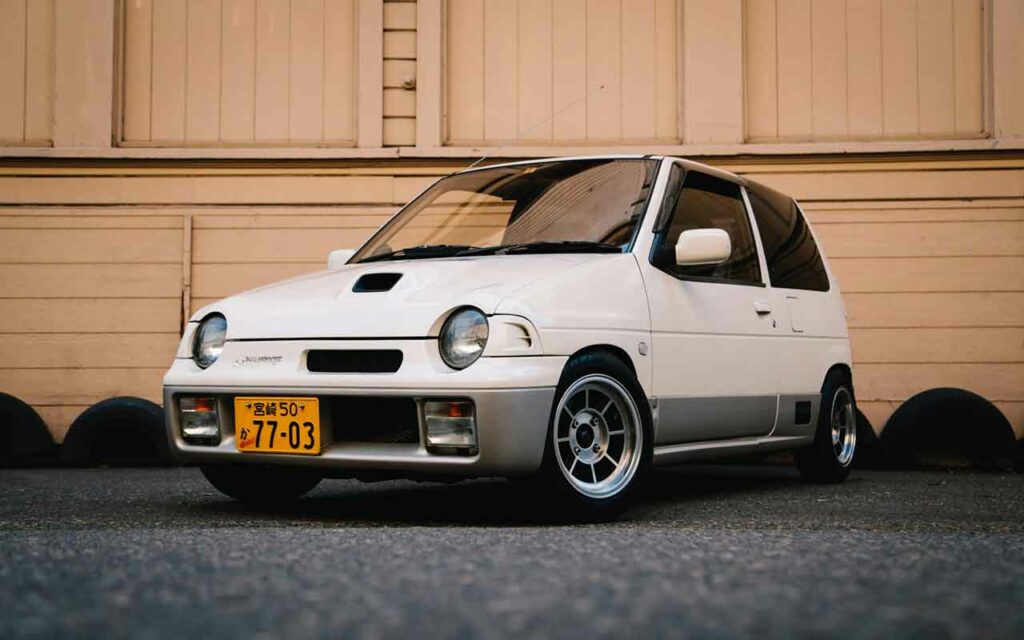
Similar to its predecessors, it continues to be built on a lightweight HEARTECT platform and has the same R06A engine for regular models, but other models receive the new R06D engine with mild hybrid system and are the only Altos to have it. CVT (continuously variable transmission) is the only transmission system available for the car.
3. Mitsubishi Minica (1962-2011)
The Mitsubishi Minica is a kei car produced by Mitsubishi Motors and was only intended as a JDM from 1962 to 2011. In 2011, the car was replaced with Mitsubishi eK. The most recent generation spotted a 657 cc three-cylinder single overhead cam unit, equipped with four valves per cylinder.
It was at the maximum exterior dimensions and engine displacement limits as specified in Japanese government regulations for kei cars. In the past, the Mitsubishi 360/Minica (the first generation) competed with the established Subaru 360, Daihatsu Fellow Max, and the Suzuki Fronte in the late sixties. It had great fuel efficiency and was a great machine in a small package.
4. Subaru Sambar (1961-present)
Suzuki was trying to up its game with new truck products that satisfy kei standards, and Japanese are going crazy for it, or at the very least, Japanese engineers are. The idea of driving tiny trucks might infuriate Americans, but for Japanese, not so much.
The Sambar pickup truck has a 658cc engine and is rear-wheel drive, the current models start at $7900. Nothing in the truck looks out of place despite being made of plastic (most cars have plastic interiors), and although the engine has smaller capacity than even motorcycles, it won’t give off that slow feel at all (thanks to the low weight)
5. Suzuki Cervo (1976-2009)
Another one on this list of best kei cars is the Suzuki Cervo. It is manufactured by the Suzuki Motor Corporation. Older versions are less refined in their design than the newest Cervo HG21S (5th edition), which is much sleeker and as an Alto-based kei car, more luxurious and sportier than its predecessors.
The car also has a 660 cc engine, and it will also give a good mileage as a long lasting product despite its highly affordable price tag. You will certainly feel very relaxed hitting the road on this vehicle.
6. Autozam AZ-1 (1992-1994)
The Autozam AZ-1 is a mid-engined kei-class sports car, but it was inspired by Suzuki, which happened to be where it got its engine from as well. Its engine was a 657cc turbocharged engine.

This type of engine only produces extra power (which uses extra gas) when required, so if you are only gently cruising, the engine shall do the same, in contrast to other types of engines.
Coming into the market during the recession in Japan, the AZ-1 however, was dubbed “too expensive and cramped for a kei car”, billed at around $12400.
7. Honda Beat (1991-1996)
The Honda Beat wasn’t a very mass-produced car; however, we do have a soft spot for this one. The only two mainstream models were the PP1-100 and the PP1-110. There were also some limited editions.
The Beat engine utilized a system called the MTREC (multi throttle responsive engine control) instead of the turbocharger or supercharger, which only allowed for a top speed of 84 mph. A horde of 569 Honda Beats set the world record of the largest parade of Honda cars. The Honda Beat was a testament to the rise of the wave of Kei-style sports cars, along with the Mazda Autozam AZ-1 and the Suzuki Cappuccino.
8. Suzuki Cappuccino (1991-1998)
The Cappuccino has a turbocharged, three-cylinder, 657cc DOHC engine. There are also three removable panels, so you can use the car as either a closed coupé, T-top or targa. Along with the Autozam AZ-1, Honda Beat, the Suzuki Cappuccino was called the ABC or kei-sporty cars.
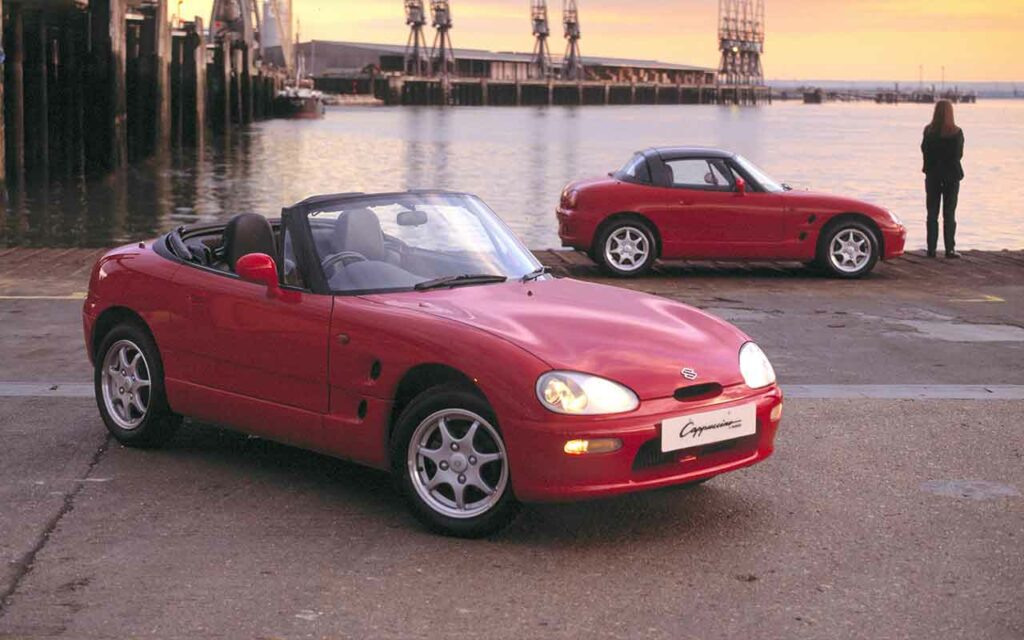
Also, the Suzuki Cappuccino was described as a highlight in an otherwise mediocre Suzuki lineup of the mid 90s. However, with a small fuel tank and limited boot capacity, it is not meant for daily use.
9. Honda S660 (2015-present)
The Honda S660 put an end to the era of cheap kei sports cars for Honda with the coming of the version Z. The successor of the Honda Beat, this is a two-seater rear-wheel-drive sports car with a targa roof. It has a 658cc turbocharged engine which is mid-mounted and has the same exterior as the Honda Beat.
It is noted by Top Gear that the exported version of the car is highly maneuverable yet lacks power compared to the Mazda MX-5. All in all, this is still a very highly revered kei car model that you can definitely count on to meet your daily commutes.
10. Mazda Carol (1962-1970: mazda, 1989-present: suzuki)
Mazda Carol was only manufactured during the 1962-1970 period by Mazda but got rebadged and went back on the production line in the hands of Suzuki from 1989 onwards.
It had a very sturdy monocoque body, a four-cylinder four-stroke engine, a five-bearing crankshaft and four-wheel independent suspension by torsion bars and this led to high production costs, and has a subpar spaciousness compared to most kei cars despite its comfortable ride. Nonetheless, the Carol was an incredible success in the marketplace, capturing 67% of the Kei market in its first year.
If you want any of these kei cars (assuming they are still some available on the market), you can only import them to your home country since they are JDM kei cars.
FAQs About Kei Cars
1. Why are they called Kei cars?
The term “kei car” stemmed directly from the Japanese word “keijidousha” which means light automobile. “keijidousha” also refers to the ultra-lightweight trucks and minivans that conforms to the Japanese Kei standards. This standard is strict to follow and is only popular in Japan, so are the kei cars.
This is due to the land spaces in Japan being so small that there are a lot of small parking lots and narrow roads. For your information, the cars measurements must not exceed a certain threshold (3.4 m in length, 1.48 m in width, and 2 m in height or less, and a displacement of 0.66 liter or less). Also, the cars weigh around 750kg to 950kg.
2. Are Kei cars legal in America?
The US government forbids the importation and registration of foreign-market vehicles under 25 years of age, and that includes kei cars as well as other desirable JDM cars. Kei cars are mostly JDM cars as well, so you generally need to buy a used kei car (25 years old and above, of course) if you don’t want to get caught. After that, everything else is perfectly legal.
3. How much do Kei cars cost?
Kei cars are regularly priced at 1000000 yen, but if you convert that into dollars, you are only looking at $10000.
4. Why are Kei cars so cheap?
Due to their size and weight, Kei cars are cheap and fun little vehicles. The Suzuki Cappuccino is the most famous among Americans right now. It weighs at around 725kg and is 3295mm long, 1395 mm wide, conforming to the kei standard’s restrictions.
5. Do Kei cars have airbags?
Despite their cute design and their tiny size and weight, this tiny vehicle can get you anywhere. This highly capable vehicle features air conditioning, power steering, anti-lock brakes, and airbags as well. The car seems tightly packed, but with all the right accommodations to give you a smooth and comfortable drive.
6. Can Kei cars go on the highway?
These cars are mostly sold to the poor, however, that should not undermine the fact that they are the smallest highway-legal passenger cars on the market around the world. You shouldn’t have any problem with their performance on a daily basis.

